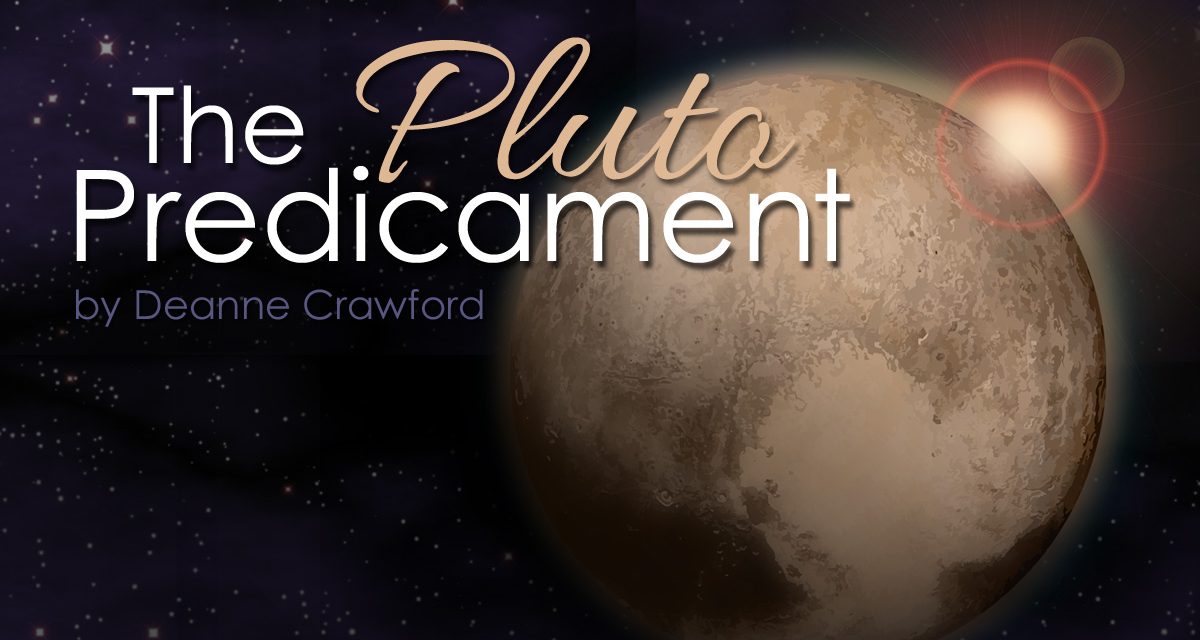“My Very Educated Mother Just Served Us Nine Pizzas” or did she? Parents today learned this clever mnemonic to learn the order of the planets. That is, until 2006, when suddenly Pluto lost planet status. Like many in my generation, I struggled to accept this drastic change. Whether you accept the International Astronomical Unit’s decision or not, science’s understanding of planets has changed since 1930. Let’s explore the fascinating story of Pluto’s planetary problem!
Pluto was discovered in 1930 by Clyde Tombaugh from the Lowell Observatory in Flagstaff, Arizona. His discovery was centered around years of planet hunting, in search of an elusive, 9th planet which was called Planet X. At first, Pluto was simply referred to as Planet X, until 11-year-old Venetia Phair suggested the name Pluto. It was a hit with astronomers and Planet X had a new name. Based on telescope technology at the time, Pluto was considered like other planets in our solar system. It was only over the next 75 years with the improved telescopes that scientists began to realize that Pluto was different. What made it different? First, it was significantly smaller than other planets, being 1/6th of the mass of Earth’s moon. It also has a different composition. While the Terrestrial planets (Mercury, Venus, Earth, and Mars) are small, rocky, and close to the sun and the Jovian planets (Jupiter, Saturn, Uranus, and Neptune) have little solid surfaces and are mostly hydrogen and helium, Pluto is made mostly out of ice with a very small rocky core. Watch Solar System 101 from National Geographic to learn more.
At first, scientists agreed that Pluto’s having unique characteristics still allowed it to be classified as a planet. That is, until the early 21st century, when other heavenly bodies, similar in size to Pluto and her moon, Charon, were discovered at the edge of our solar system. One of the heavenly bodies, Eris, was thought to be larger than Pluto, which created a great debate in the science community. Should the solar system have many more planets? What is a planet, anyway?
But before we go on, let’s pause a minute and think about what is science? Ask your children to define science. For many of us, science is hard to define. We may talk about the scientific process or types of science, but how do we define it? Take time to read What is Science for Kids. Simply put, science is the way we improve our understanding of the natural world around us and is based on experimentation and observation. Why is this important? It is important to remember that as we learn more about the world around us, our understanding and application of knowledge changes.
As astronomers wrestled with the definition of “planet,” the International Astronomical Union (IAU) made the controversial decision that Pluto and other similar bodies would no longer be defined as planets. To do this, they had to redefine planet. Based on Greek word for wander, the word planet has been used to describe objects that moved among the stars in the night sky. In 2006, the IAU adopted a new definition for planet. According to their definition, there are 3 things a planet must do:
- It must orbit a star (the Sun)
- It must be big enough to have enough gravity to force it into a spherical shape.
- It must be big enough that its gravity cleared away any other objects of a similar size near its orbit around the Sun.
With this new definition, Pluto no longer qualified (meeting only two of the three criteria). Take time to visit NASA’s Space Place, Duckster’s Astronomy: Dwarf Planet: Pluto, How Stuff Works Pluto, and FreeSchool’s video All About Pluto and Dwarf Planets. Ask children what part of the new planet definition did Pluto not meet? (3rd criteria). Can they explain the difference between a planet and a dwarf planet? Encourage older children to evaluate the differences and present their opinion on the definition change. This can be in written or oral format.
In 2006, NASA launched the New Horizon’s unmanned spacecraft to learn more about Pluto. Taking nine years to reach Pluto, New Horizons spent six months studying Pluto and transmitting the information to NASA scientists. Although our understanding of the far reaches of the solar system is still growing, we have learned some key things about Pluto. First, much of what we believed about Pluto was wrong. Pluto is more complex than previously imagined. For instance, it is not covered in craters as originally thought. Geographically diverse, its vast icy plains and rugged ice mountains of frozen methane and nitrogen fill the surface. One of the most interesting discoveries has been what scientists call, the “heart of Pluto,” a heart shaped, mostly smooth glacier. This large area has a right and left lobe (or side), much like the human heart. As scientists have studied Pluto’s heart, they theorize that the nitrogen ices go through a daily cycle, changing from ice to vapor in the daytime sunlight and back to the icy surface at night. Each cycle acts like a heartbeat and drives nitrogen winds around the planet at speeds up to 20 miles per hour. Oddly, the wind flows in the opposite direction of the planet’s rotation. It is thought Pluto’s heart controls its atmosphere and geography. There is much we have yet to discover about this amazing dwarf planet. Take time to explore more with your children! Here are a few links to start: NASA Science: Solar System Exploration Pluto; Universe Today on You-Tube®; and Ceres and Pluto Dwarf Planet lesson plans.
But this is only the beginning! As our understanding grows through the continued explorations of the New Horizon’s spacecraft, we will be able to use scientific principles to gain a greater understanding of the universe. Encourage your children to be curious. Ask questions. Hypothesize. Test. And observe. The world needs inquisitive minds! ~ Deanne





